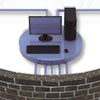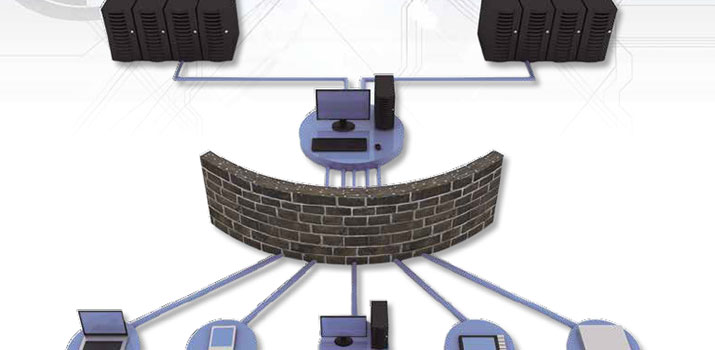
Six Steps To Choosing Your Next Gen Intrusion Prevention System
New technologies bring new challenges
 Today’s IT professionals—regardless of
industry—are adopting the latest technologies
to meet increasing bandwidth
demands, create higher and faster performing
networks and increase availability
as cost-effectively as possible. But new
technologies bring new challenges, and organizations’
IT departments must rapidly adjust to the latest
technologies while keeping their already stressed network
infrastructures stable and secure. As such, the most common
question when adopting a new technology or device is
simply: How can I be sure the solution I choose will perform
as expected in my network?
Today’s IT professionals—regardless of
industry—are adopting the latest technologies
to meet increasing bandwidth
demands, create higher and faster performing
networks and increase availability
as cost-effectively as possible. But new
technologies bring new challenges, and organizations’
IT departments must rapidly adjust to the latest
technologies while keeping their already stressed network
infrastructures stable and secure. As such, the most common
question when adopting a new technology or device is
simply: How can I be sure the solution I choose will perform
as expected in my network?
If the new deployment involves next-generation firewalls or
Intrusion Prevention Systems (IPS), this decision can have added
challenges. The sophisticated high-performance network and security
devices within these infrastructures require a more comprehensive
approach to testing and validation than traditional testing
tools can provide. Today’s devices use deep packet inspection
(DPI) to examine traffic in ways that legacy testing tools were
never designed to validate.
These devices, and the complex traffic they handle, demand
testing with real-world application, attack and malformed traffic
at line-rate speeds. Without this improved approach, contentaware
equipment cannot be stressed thoroughly or accurately
enough to determine its true capabilities. That’s why companies
are turning to an objective testing approach that allows them
to impose their own conditions during pre-purchase evaluations,
ensuring that they can rigorously validate device capabilities under
real-world scenarios, including the applications they must
handle, actual user behavior and the attacks they expect to see.
Doing this prior to deployment will not only save time and money,
but it also ensures that the network remains resilient. Therefore,
it’s imperative that IT buyers follow the six steps outlined
below to make informed purchase decisions, eliminating costly
post-deployment troubleshooting.
Create and prioritize specifications for products to be evaluated. As with any project, it is wise to begin with the end goal
in mind. Before considering any piece of equipment, define and
prioritize the company’s needs for infrastructure build-out.
Otherwise, it is too easy to dive into questions of “speeds and
feeds” without taking into account broader objectives. A good
way to start is by asking fundamental questions. How should
the infrastructure support key objectives? What are the transaction
latency requirements? How important is the security of
transactions in comparison to their speed? Which services are
most sensitive, requiring the highest levels of security? Is application
inspection necessary?
Rethink testing around repeatable, quantitative principles. Create
a plan for stressing each device under test (DUT) with realworld
application, attack and malformed traffic at heavy load.
Doing this is not as simple as taking the older, ad hoc approach
to testing and then injecting authentic traffic. Instead, the entire
plan should embrace a standardized methodology and scientific
approach to eliminate guesswork. That means the plan must use
repeatable experiments that yield clear, quantitative results to accurately
validate the capabilities of DPI-enabled devices. Previously,
IT professionals have lacked the precision equipment necessary
to enforce consistent standards across testing processes.
Today, however, they have access to superior testing products
that create authentic network traffic and capture precise measurements
of its effects, even for complex environments.
Use standardized scores to separate pretenders from contenders.
It is relatively straightforward to use standardized scoring
methods to pare down a long list of candidate devices without
performing comprehensive validation of each product. These
scores quickly eliminate devices from consideration that clearly
do not meet an organization’s needs. The resulting score is presented
as a numeric grade from 1 to 100. Devices may receive no
score if they fail to pass traffic at any point or if they degrade to
an unacceptable performance level. The Resiliency Score1 takes
the guesswork and subjectivity out of validation and allows administrators
to quickly understand the degree to which system
security will be impacted under load, attack and real-world application
traffic.
Test final contenders with individual test scenarios that mirror
the production environment. True validation requires an accurate
understanding of the application, network and security landscape
in which devices will be operating. Review the infrastructure’s
traffic mix and the mixes of service providers before designing
individual tests; this will ensure that the testing equipment reflects
the latest versions and types of application traffic that traverse
the network. However, generating real traffic is not enough. The
traffic mix used also must be repeatable yet random. Randomization
makes test traffic behave like real-world traffic, creating
unexpected patterns that force DUTs to work harder. Creating
repeatable, random traffic requires testing equipment that uses
a pseudorandom number generator (PRNG) to set a seed value
that creates standardized, random traffic.
Execute a layered testing progression that includes load, application
traffic, security attacks and other stress vectors. This is
where the scientific method comes into play. By changing only one
variable at a time and testing the parameters established earlier,
this progression will reveal the specific strengths and weaknesses
of each product, replacing guesswork with verifiable results. The
processes in this phase ensure that a DUT can adequately handle
heavy load, in terms of both sessions and application throughput.
If the device cannot pass these tests with traffic known to be
free of attacks, there is no way it will process enough traffic once
its security features are turned on or when it also must handle
malformed traffic or other stress vectors.
Lay the groundwork for successful purchase negotiation, deployment
and maintenance. Deploying untested network and security
devices creates nightmare scenarios. Untested equipment
requires weeks of post-deployment troubleshooting that is frustrating
and time-consuming, and often leads to finger-pointing
and costly remediation steps. This is particularly true when device
outages, security breaches or unplanned bottlenecks affect entire
infrastructures; such failures can damage an organization’s reputation.
Testing pre-deployment minimizes the risk of these problems
and saves hundreds of hours of staff time by eliminating
surprises and guesswork. Selecting the right device is about more
than finding the right make and model, it also means choosing
the right amount of equipment for the infrastructure in order to
meet business needs.
IT departments should look for information that goes far beyond
the performance and security features that can be read off
a data sheet. They should be measuring the security and stability
of their IPSs based on real-world conditions, not generic conditions
in a lab. Another common mistake that IT departments
make is relying on test lab reports to make informed decisions.
Labs often perform device testing in isolation, without regard
to the unique environments of purchasers. Also, test lab reports
are often funded by device manufacturers, which inevitably raise
objectivity questions. Ultimately, IT departments choose a firewall
vendor, but they never feel as though they truly understand
how well the device is going to work. Will it actually recognize
the difference between applications, even at a granular level, such
as the difference between Facebook traffic and Facebook messaging
traffic? Putting that next-gen firewall/IPS through proper
context-aware testing is the only way to be confident it will perform
as advertised.
If IT leaders follow these technical recommendations and
avoid making common mistakes, they can select the right products
to meet their business objectives, improve infrastructure
planning and resiliency by understanding device capabilities and
save up to 50 percent on IT investments. This also eliminates hundreds
of man-hours in post-purchase configuration and tuning,
and gives purchasers advanced insight into device capabilities, enabling
them to configure devices appropriately in order to avoid
surprises and delays.
This article originally appeared in the February 2013 issue of Security Today.